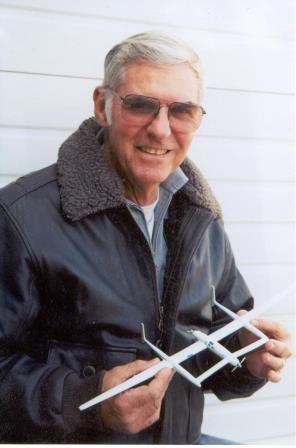Metaphors for breaking records abound, and patience for “limited thinking” is in short supply. So when someone who’s flown combat missions over Vietnam and broken world aviation records talks, you listen.
Dick Rutan, along with his brother, Burt Rutan, and co-pilot Jeana Yeager, made aviation history in 1986 when their Voyager aircraft became the first plane to circumnavigate the Earth without refueling. His experiences may help you to succeed in your coatings contracting business.
Failures First
Rutan began researching his Voyager journey in the 1920s when technology was changing rapidly. “In a very short time frame, you have people changing transportation from covered wagons to airplanes. The technological changes were immense,” he said. But it was his drive that drove his career initially. “When I was growing up and thinking about what I wanted to do, I knew it would be something in aviation and driving new technology. I initially became a fighter pilot in the Air Force, but when I got out of the service my brother, an aviation inventor, had some interesting ideas, and it started another chapter in my life,” Rutan explained.
Interesting ideas indeed! After two and half years of testing and many errors — “at least a half a dozen that should have killed me,” according to Rutan — the Voyager crew started looking for problems. “My brother, Burt, and I, along with the rest of the Voyager team, purposefully tried to look for failure, so that by the time it came to tackle the enormous task of flying around the world without refueling, we knew we would be able to achieve success,” he explained.
That success paid off. The crew flew around the world in less than 10 days without stopping — even for fuel. Although there isn’t necessarily a direct overlap between flying and applying coatings, Rutan sees similarities in the approach.
“There are obvious parallels,” Rutan said. “Airplanes are a technical challenge. We want to make them light and strong and able to withstand what Mother Nature presents while flying. And when your sealers are delaminating from moisture…that is also Mother Nature’s way of trying to return the environment to a natural state. The challenge for sustainable coatings and sealers is making something last while working under those same natural conditions.”
Rutan also sees similarities between the two industries’ continual process improvement. “There is still so much to explore in both industries. We have only just begun to see what is possible,” he said.
In Rutan’s opinion, the biggest problem in the industry today is the fear of failure. “That’s unfortunate. If industry leaders are worth their salt, they will encourage failure because out of that comes incredible success,” he said. Rutan sees the need to focus on the industry’s problems. He sees opportunities in areas where there seem to be none. “From that chaos and nonsense, you will find opportunity. You will fail at first, but that is ok,” he explained.
Learning from failures seems to be a common thread in Rutan’s philosophy.
Continuing to Improve
 For Rutan, the flip side of failure is improvement — not necessarily success. His advice for constant improvement is to question everything. “Can you improve cure times or limit heat dissipation? Is it possible to have stronger, more sustainable concrete? Those are the questions that should point the industry beyond its existing boundaries,” he explained.
For Rutan, the flip side of failure is improvement — not necessarily success. His advice for constant improvement is to question everything. “Can you improve cure times or limit heat dissipation? Is it possible to have stronger, more sustainable concrete? Those are the questions that should point the industry beyond its existing boundaries,” he explained.
Rutan also warns the coatings contractor against what he called “institutional inertia.” He believes that just because something is traditional or accepted doesn’t mean that it shouldn’t be improved upon. “You may find ways to improve processes and perhaps even discover that some accepted practices have been wrong all along,” he explained. “Aircraft engineers were skeptical of carbon fiber usage in the beginning, but now it is an accepted fact that it is both lighter and stronger than the aluminum body aircraft construction technology it is replacing.” He believes that this view of continual process improvement can be applied across many different industries, including coatings.
Overcoming Obstacles
For Rutan, the status quo seems to be a four-letter word. His belief in making the impossible possible is what brought him success with the Voyager’s trip, invitations to be the keynote speaker at conferences (such as at the Concrete Sawing & Drilling Association’s tech fair), and more.
“I am always skeptical when people believe that current accepted practices are the best they will ever be — in any industry,” Rutan explained. “I tell students and other people starting their careers that when they see barriers, limitations, fences, or stop signs, they should view them instead as ‘targets of opportunity.’ If anyone ever says something is impossible, they are almost certainly wrong.”
About the Author:
Christopher Bennett is a project manager and specification writer at Tao Group, a construction-consulting firm dedicated to achieving quantifiable and repeatable results. He previously worked with specifications and product management at Husqvarna Construction Products. Prior to his career in building, Bennett served as a Mandarin Chinese crypto-linguist on active duty for the United States Navy. For more information, contact: Christopher Bennett, christopher.bennett@taogroup.co
Note: For more information on Dick Rutan, visit www.dickrutan.com